Trapped in a loveless marriage and suffering from mental health problems and opium addiction, Empress Wanrong ultimately died alone at age 39 in a prison camp run by Chinese Communist guerillas.
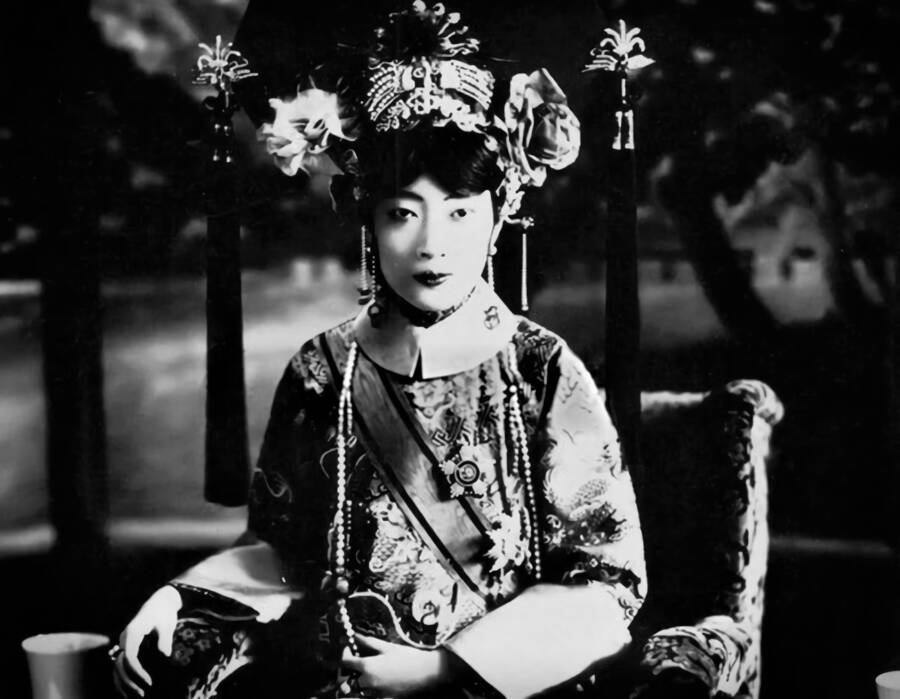
Wikimedia CommonsEmpress Wanrong died at 39.
The life and death of Empress Wanrong, who wed the last Emperor of China, is one of monumental distress. The Beijing native came of age after about two millennia of Imperial rule, only to join the royal family in its dying days. Her marriage and the political atmosphere of the day would bring the empress nothing but heartbreak, pain — and death.
Born at the end of the Qing Dynasty, Wanrong was chosen by the last emperor, Puyi, as one of his wives. But their marriage was loveless.
The young empress found herself competing with her husband’s consort, which worsened both her opium addiction and mental health problems. Meanwhile, political instability in China put both Wanrong and Puyi in the precarious position of heading the Japanese puppet state Manchukuo.
As conflicts raged both in and out of China, Wanrong eventually fell into the hands of Chinese communist guerillas, who threw her in a prison camp. Her final days were spent writhing on the floor in the agonies of opium withdrawal, while put on display like a caged zoo animal. She eventually died alone in a puddle of her own urine at the age of just 39.
To this day, Empress Wanrong remains one of the most tragic figures in Chinese history.
How Wanrong Became Empress Of China
Born Gobulo Wanrong in 1906 in Beijing, the future empress came of age during the Qing Dynasty. Though her mother died when Wanrong was young, her father held an important position on society.
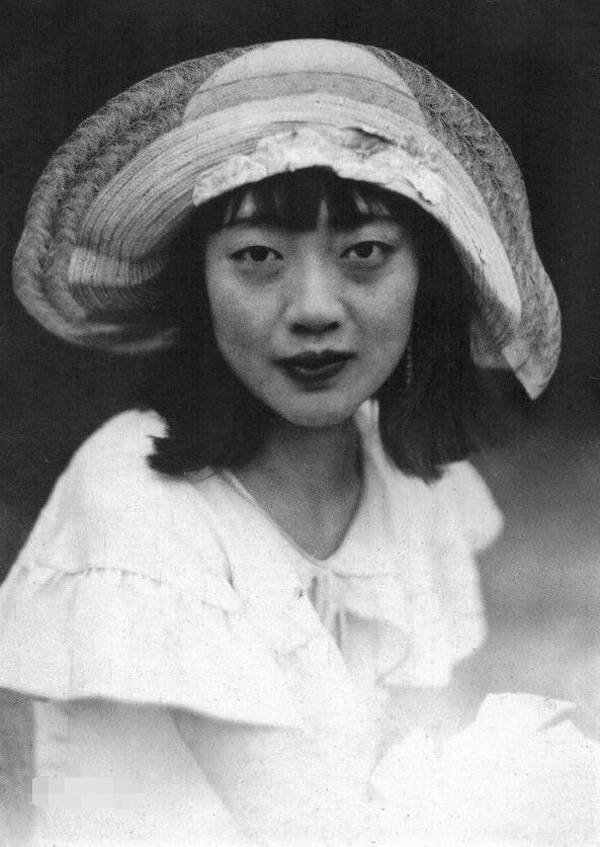
Wikimedia CommonsWanrong enjoyed Western art and clothing.
The National Palace Museum reports that Wanrong’s father Rongyuan was part of the Plain White Banner — one of the Eight Banners, or elite administrative divisions of Qing society — and Shanghai Daily notes that he was also Minister of Domestic Affairs for the Imperial Court.
But in 1911, revolution roared through China. The Qing Dynasty was overthrown, which led to the creation of the Republic of China in 1912.
Despite these political convulsions, however, the young Chinese emperor, Puyi, was allowed retain his title. The teenage royal was even allowed to hold a wedding in the Forbidden City — once he chose a bride. Puyi was instructed to choose his future wife from a selection of photos. But because he couldn’t marry his first choice, a 12-year-old girl named Wenxiu, he reluctantly picked Wanrong, with Wenxiu as his consort.
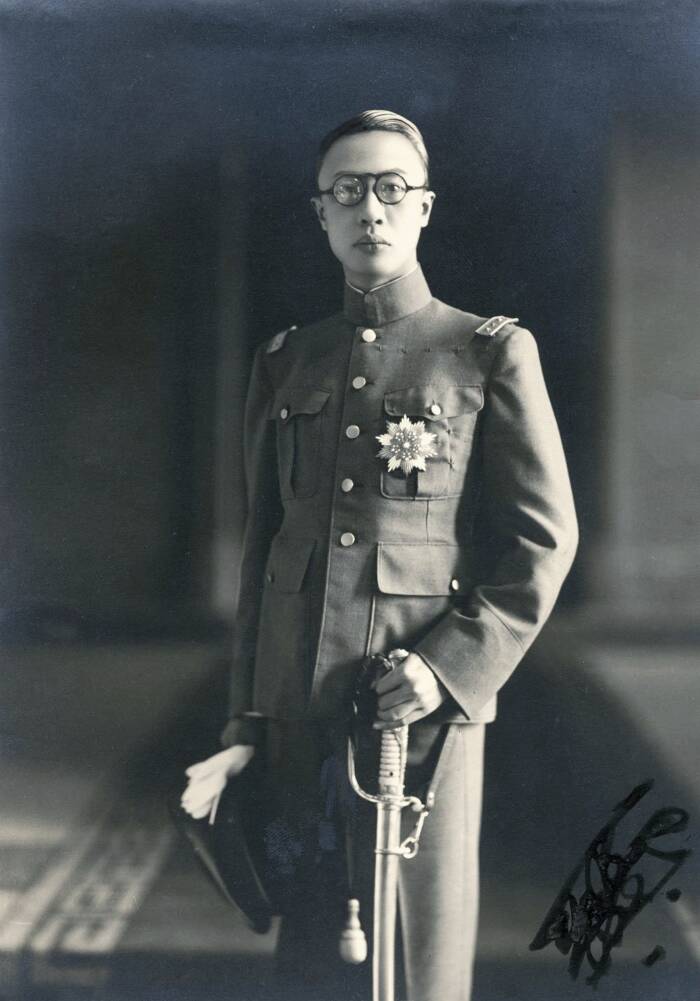
Public DomainEmperor Puyi in the 1930s or 1940s.
Wanrong was 16 years old at the time. And the teenager wasn’t happy about the arrangement. As eunuchs and ladies-in-waiting flocked to her side to prepare her for her marriage, Wanrong pushed back.
“She rebelled,” her brother Runqi Gobulo later recalled to The New York Times. “She was fed up with the lessons, unhappy about marrying someone she had never met before.”
Despite her reluctance, Wanrong and Puyi were married on Dec. 1, 1922. The couple were carried through Beijing on an ornate phoenix sedan chair while thousands watched. The ceremony saw Wanrong step over a fire, a saddle, and an apple per Manchu tradition.
However, things went wrong almost from the beginning. The newlyweds were supposed to spend the night together. But rather than consummate the marriage, Puyi fled from their room during the night.
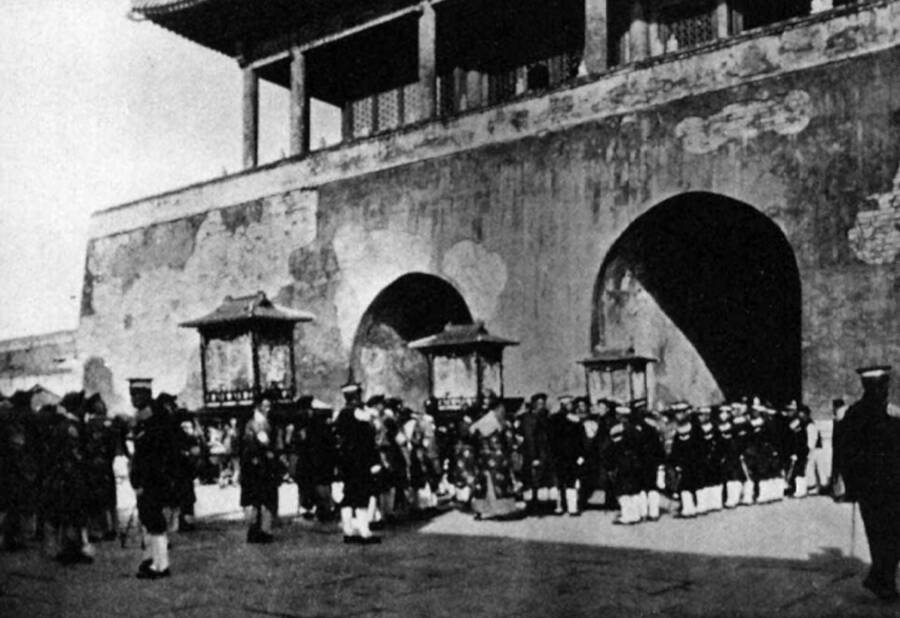
Wikimedia CommonsWanrong’s wedding procession.
Despite this auspicious start to her marriage, Empress Wanrong continued to live her own life. She embraced modernity, English cuisine, and jazz, and even adopted the Western name Elizabeth after the English queen. She was also known for her generosity, and notably donated 600 Yuan to help disaster victims in 1923.
But Empress Wanrong’s life behind the scenes could be difficult. She was jealous of Wenxiu and soon began using opium for burgeoning stomach pain and headaches. And soon, she’d have graver problems than that. In 1924, Wanrong’s life in the Forbidden City came to a sudden end.
The Royal Family’s Exile From The Forbidden City
In October 1924, a warlord named Feng Yuxiang oversaw a coup d’etat. Puyi and Wanrong were then banished from the Forbidden City.
The royal couple, along with Wenxiu, eventually made their way to the city of Tianjin under the protection of the Japanese. There, Wanrong’s dependence on opium began to grow.
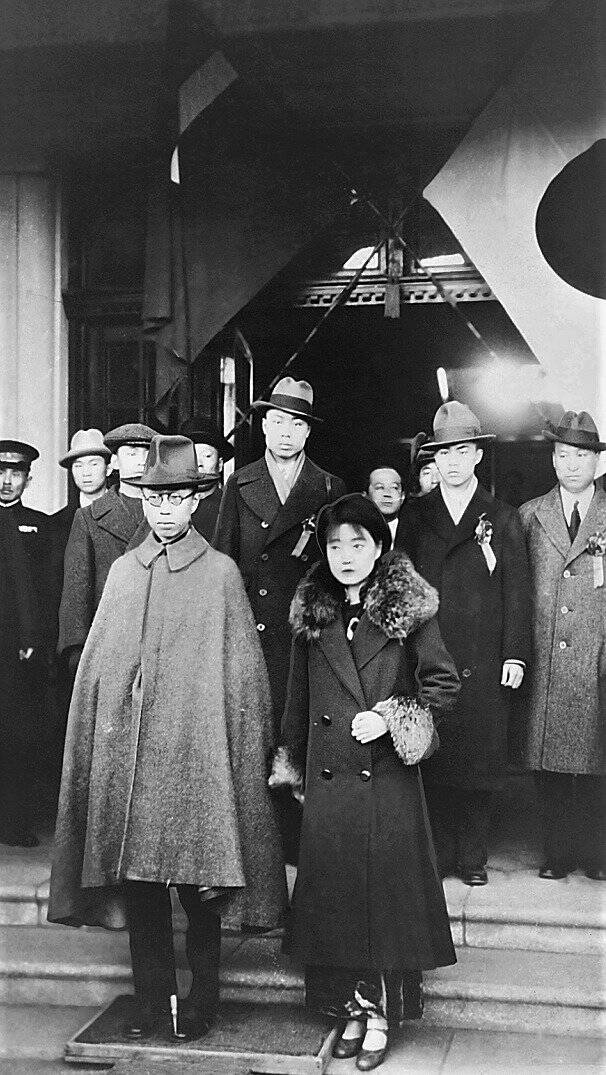
Public DomainPuyi and Wanrong in 1932, shortly before the official Manchukuo founding ceremony.
And while the empress enjoyed attending the theater, dancing, and shopping — the latter of which she did to excess as a way to compete with Wenxiu — she began suffering from neurasthenia, which manifests itself in headaches and fatigue among other symptoms. Meanwhile, she became increasingly depressed. Puyi had never come to love to her, and she suffered from loneliness, boredom, and neglect.
Wenxiu wasn’t happy with the arrangement either, and she left Puyi in 1931. Puyi blamed Wanrong, and wrote in his memoir The Last Manchu: The Autobiography of Henry Pu Yi, Last Emperor of China that he began resenting Wanrong for driving Wenxiu away. Puyi almost completely stopped talking to her after Wenxiu left.
As their relationship soured, Wanrong and Puyi’s political fortunes were also changing in complex ways. In 1932, Japan made Puyi head of the puppet state of Manchukuo in Manchuria. But their power in Manchukuo was an illusion. Wanrong was kept under constant surveillance and tried, but failed, to escape multiple times.
Though Puyi was officially crowned Emperor of Manchukuo in 1934, Empress Wanrong resented her new life and rarely made public appearances. She also began to show more severe signs of mental illness and, by 1938, was smoking two ounces of opium per day.
Then, things grew even worse.
The Tortured Final Years Of Empress Wanrong
Around this time, Empress Wanrong began having affairs with two of Puyi’s servants, Li Tiyu and Qi Jizhong. Soon, she became pregnant.
No one is entirely sure what happened when Wanrong gave birth to her daughter in 1935, but the child did not live long. Some claim that Puyi was so angry over his wife’s infidelity that he threw the newborn child into a boiler. Others say the baby was stillborn.
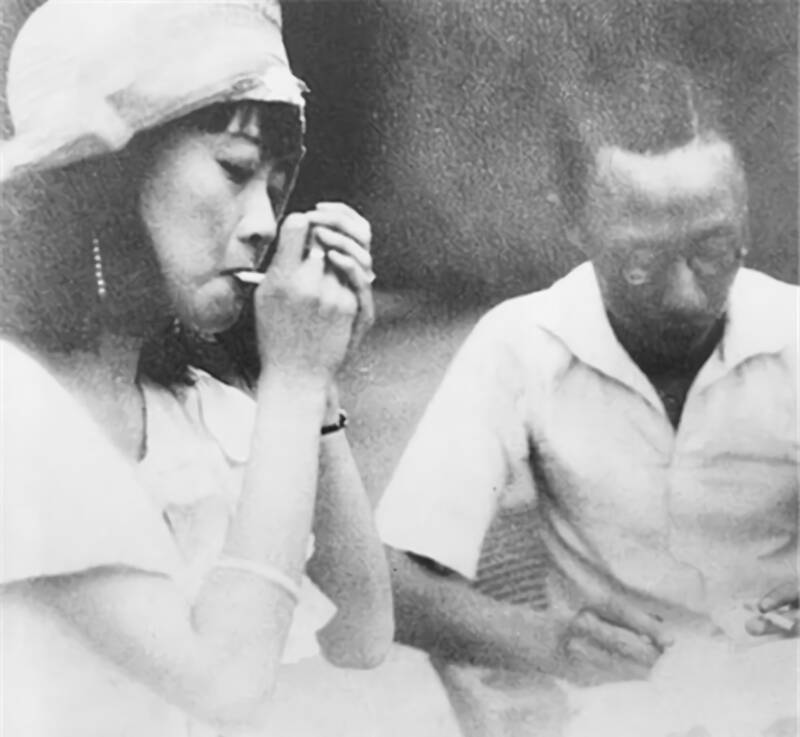
Wikimedia CommonsWanrong was a chainsmoker and opium addict.
Puyi may have told Wanrong the infant was still alive and was being raised by her brother, but Wanrong’s mental health plummeted after the baby’s birth nonetheless. Her dependance on opium soon increased.
The empress spent day and night in her palatial room to smoke opium. She purportedly also smoked two packs of cigarettes daily, rarely got out of bed, stopped grooming herself, grew frail and thin, and stopped attending birthdays or New Year’s celebrations.
According to CCTV, Wanrong could purportedly barely walk or even see by the time the Soviets invaded Manchuria in 1945. Puyi fled Manchuria, leaving his wife behind. She and her sister-in-law were arrested by Chinese communists in January 1946 while attempting to flee to Korea. Imprisoned in Jilin, Wanrong spent her final days in agony and delirium from withdrawal.
She was deprived of food and put on display like a zoo animal for her fellow Chinese, who despised Wanrong as a sympathizer of Japan. In June 1946, Wanrong died at 39 years old from malnutrition and opium withdrawal — and was left on the prison floor in a puddle of her own urine.
While Puyi spent several years in prison and became a gardener and Forbidden City tour guide after his release, the remains of Empress Wanrong were never found. In 2006, her brother Runqi held a symbolic burial for her.
Today Empress Wanrong — if she is remembered at all — is thought of as a tragic figure. Trapped in a loveless marriage and by historical circumstance, the empress lived a lonely and ultimately doomed life.